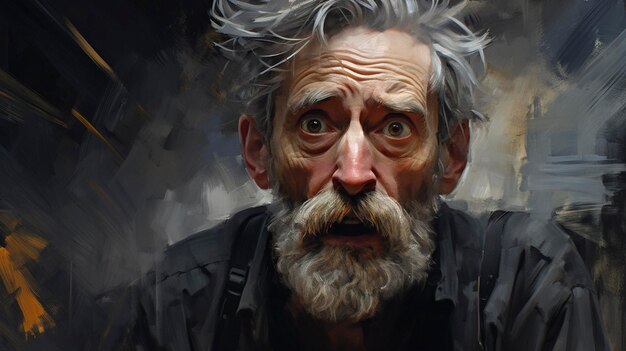Why Figurative Oil Painting Remains a Classic Choice for Artists
Why Figurative Oil Painting Remains a Classic Choice for Artists
Blog Article
A Trip With the World of Metaphorical Oil Painting: Uncovering the Special Qualities and Psychological Deepness of the Tool

Background of Metaphorical Oil Paint
Arising during the late Middle Ages and thriving throughout the Renaissance, figurative oil painting has a rich history that reflects both artistic innovation and social advancement. Originally, oil paints were made use of in Europe as a method to improve the brightness and depth of color in art work. Artists such as Jan van Eyck spearheaded the tool, demonstrating its potential to capture detailed information and structures, thus permitting an extra realistic representation of the human kind.
As the Renaissance proceeded, distinguished figures like Leonardo da Vinci and Michelangelo increased the limits of figurative oil paint. They highlighted anatomical precision and point of view, creating works that communicated emotion and narrative deepness. The medium's versatility enabled testing with light and shadow, leading to the growth of chiaroscuro techniques that better enhanced the aesthetic experience.
Special Qualities of the Tool
The development of figurative oil paint has actually been considerably affected by the distinct characteristics of the medium itself. Oil paint, made up of pigments suspended in oil, supplies artists an impressive flexibility that permits a vast array of textures and surfaces. Its slow-moving drying time allows thorough blending and layering, which can develop deepness and luminosity unattainable in other tools.
Additionally, oil paint's rich pigmentation provides dynamic shades that maintain their intensity gradually. This particular is important in metaphorical paint, where capturing the nuances of complexion and psychological expressions is paramount. The capability to attain soft shifts and refined slopes boosts the lifelike high quality of topics, permitting musicians to share complex emotional states.
Furthermore, oil paint sticks well to numerous surface areas, such as metal, wood, and canvas, expanding the range of creative expression. The tool's adaptability sustains various approaches, from detailed realism to expressive brushwork, enabling artists to discover their specific designs.
Inevitably, the one-of-a-kind residential or commercial properties of oil paint not only improve the aesthetic experience however likewise empower musicians to connect extensive narratives, making figurative oil paint a deeply evocative art form.
Strategies and Designs Used
Within the realm of figurative oil paint, artists employ a varied range of techniques and designs that add to the depth and splendor of their work. One prominent strategy is polishing, where transparent layers of paint are used over dried out layers, allowing light to permeate and reflect, boosting brightness and depth. This approach is typically used to attain a sense of realistic look and complexity in complexion.
One more strategy is impasto, where thick layers of paint are applied with a palette blade or brush, creating a distinctive surface that includes a three-dimensional quality to the paint. This style can stimulate a visceral reaction, attracting the viewer in through its tactile nature.
Artists additionally discover different brushwork styles, from fine, thorough strokes that catch elaborate functions to broader, a lot more expressive strokes that communicate movement and emotion (figurative oil painting). The option of shade palette dramatically influences the general state of mind of a piece, try this with warm tones usually passing on sensations of comfort and cool tones suggesting sorrowful
In addition, the integration of chiaroscuro, the contrast in between light and darkness, allows artists to produce significant results that enhance the narrative quality of their work. Each strategy and design is carefully chosen to raise the customer's experience and understanding.
Psychological Deepness in Figurative Art
Emotional depth works as a foundation in metaphorical art, permitting musicians to go beyond plain representation and engage viewers on a profound level. This emotional resonance is typically accomplished with the nuanced representation of human numbers, expressions, and communications. Artists harness the power of color, shadow, and light to stimulate sensations that reverberate deeply with the target market, developing a natural link to the topic.
In figurative oil painting, the elaborate layering of paint can show the complexities of human emotion. The option of combination, whether great or cozy, plays a crucial role in setting the mood and ambience of an item. As an example, softer colors might stimulate serenity and introspection, while vibrant, different colors can communicate stress and dramatization.

Influential Artists and Their Works
Many influential artists have actually considerably formed the landscape of metaphorical oil painting, each contributing one-of-a-kind perspectives and methods that remain to inspire contemporary makers. Among these artists, Lucian Freud sticks out for his extreme psychological depth and raw portrayal of the human kind, often blurring the lines between elegance and degeneration. Freud's works, defined by thick, impasto brushstrokes, welcome visitors to challenge the complexities of identity and vulnerability.

In A Similar Way, Andrew Wyeth's thorough realistic look in items like "Christina's World" captures profound stories within apparently basic structures. His use light and shadow stimulates a feeling of fond memories and emotional resonance, drawing visitors right into the intimate worlds he portrays.
In the world of modern-day art, Kehinde Wiley has gained acknowledgment for his vivid, larger-than-life portraits that test standard concepts of representation. By positioning people of color in contexts evocative classic portraiture, Wiley's job more information redefines the canon of art history.
These musicians, together with others, have not only enriched metaphorical oil painting but have actually likewise increased the discussion surrounding emotion, identification, and culture, guaranteeing that the tool stays a vital kind of expression in the art world. figurative oil painting.
Verdict
Finally, metaphorical oil painting continues to be a powerful tool that envelops the complexities of human feeling through its abundant pigmentation and flexible strategies. The historical advancement of this art form, integrated with its unique attributes, permits profound imaginative expression. Strategies such as glazing and impasto boost the emotional resonance of each item, while the contributions of prominent artists proceed to motivate and form the discourse bordering this timeless category. The journey through figurative oil paint exposes its long lasting relevance in the art world.
The exploration of metaphorical oil paint offers an extensive understanding into the interaction of technique, emotion, and historic context that specifies this venerable tool. Oil paint, composed of pigments suspended in oil, provides artists an impressive versatility that allows for a broad range of structures and surfaces.Within the realm of figurative oil painting, artists employ a diverse array of strategies and designs that add to the deepness and splendor of their work.Various prominent artists have significantly shaped the landscape of metaphorical oil paint, each adding special point of views and methods that continue to inspire modern makers.In verdict, figurative oil painting remains an effective tool that encapsulates the complexities of human feeling via its rich pigmentation and functional strategies.
Report this page